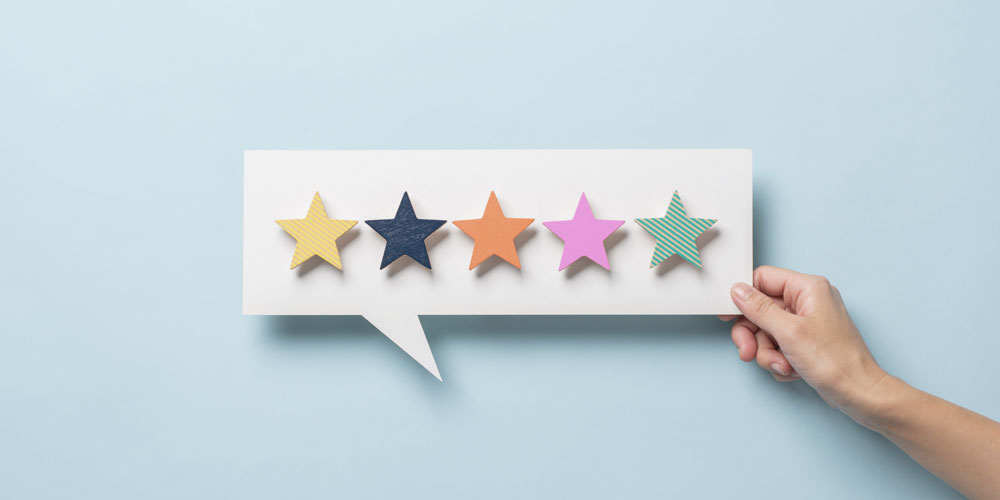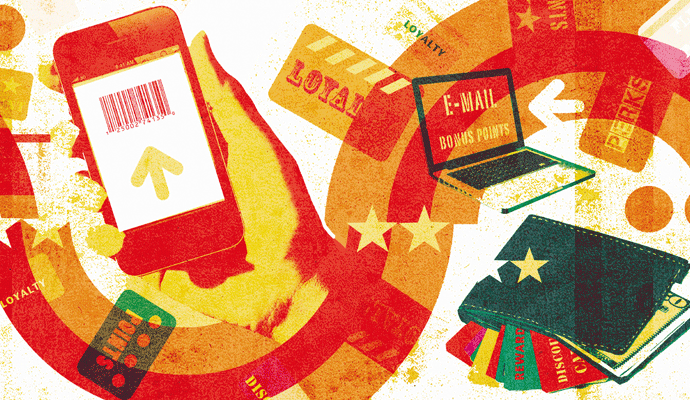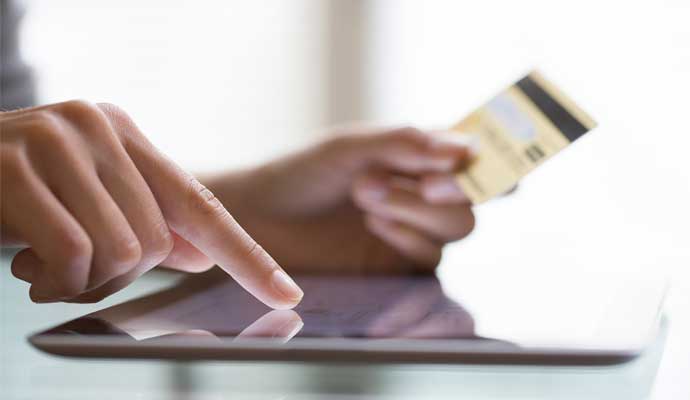The untapped potential of B2B customer loyalty programs
Applying the principles of B2C rewards programs to B2B customers can reap long-term benefits.
Retailers, hotels, airlines, and restaurants have long relied on loyalty programs—including discounts, early access to new products, and exclusive perks that enhance the customer experience and inspire a following—to strengthen customer loyalty. But only recently has the idea taken root in the B2B world. And it’s about time. In a recent PwC customer survey, almost 60% of B2B customers reported they had never had an experience with a brand that made them feel special. That’s an alarmingly high percentage of customers who’ve been given no particular reason to stick around. But the implications of consumer loyalty for B2B companies are enormous, and, if anything, as crucial as they are for consumer-facing companies. After all, it can cost five times more to acquire a customer than to retain one, and on average the most loyal customers account for up to 80% of a company’s revenues.
For companies willing to reimagine the traditional transactional nature of their B2B relationships, a loyalty program represents an important growth opportunity. But in this regard, B2B customers can be a tough nut to crack. Many times, the B2B “buyer” is actually more than one person—including those in procurement and finance, along with heads of business, for instance—and these individuals have different needs. Companies must figure out who to pursue: the whole entity or the different purchasers? And getting targeting right is just one piece of the puzzle. To be successful, a B2B loyalty program must also align with the customer’s strategic goals and transform transactional relationships into dynamic partnerships designed to promote mutual success.
The benefits of B2B loyalty programs
By developing a relationship with your customers, you can reap major benefits.
Growing top-line revenue and improving profit margins. Loyalty programs can feature tools that encourage customers to try out more products and services, thus increasing their purchase frequency and spend. Programs can also offer differentiated benefits, based on factors such as seasonality or customer purchase behavior, to promote the sale of higher-margin products. Pairing these offerings with creative premiums that offer strategic benefit to customers—a TV spot highlighting the customer, a store makeover, energy-efficient equipment—help shift the relationship from transaction to partnership. The more the customer interacts with your brand and captures new rewards, the more your revenue and profitability can climb.
Reducing costs and raising customer satisfaction. Done right, loyalty programs can replace the blunt instruments of discounting and heavy promotions with a precision instrument—one that reduces monetary discounts while expanding customer benefits in other ways, both tangible and intangible. You can offer gestures or perks, such as helping the customer optimize its product mix—by selling more of one popular product than another less popular product, for instance—to drive maximum revenue. These measures don’t directly hit the bottom line, but still build on the relationship. An improved relationship also will make the customer contracting process smoother and simpler. Collectively, these benefits add up to greater customer satisfaction, retention, and advocacy, and increased revenue and profitability.
Promoting digital engagement and generating valuable customer data. The B2C sector has made the value of digital engagement clear. Beyond attracting and retaining customers, digital engagement generates what we call the “engagement flywheel”: continuous customer insights that spark ideas for new products and services, deepen the customer relationship, and, in turn, help companies grow. The B2B sector has been lagging in this respect, but loyalty programs can help jump-start digital engagement efforts. You can tailor digital channels and techniques to each unique customer type, including the oft-neglected small and medium-sized enterprises (SMEs). And as you advance your digital transformation efforts, you can put big data and analytics to work, accelerating the engagement flywheel.
Five actions for making B2B loyalty work
Although you can’t build a winning B2B program by cloning your B2C program, you can capitalize on decades’ worth of B2C lessons learned. To achieve the benefits we’ve outlined, you’ll need to adapt B2C principles to your business.
Done right, loyalty programs can replace the blunt instruments of discounting and heavy promotions with a precision instrument—one that reduces monetary discounts while expanding customer benefits in other ways.
Dig deeper to understand your business buyers. The foundation of any well-designed loyalty program is a carefully thought-through segmentation strategy. This starts with identifying and understanding your customer segments. But as we’ve already mentioned, understanding your B2B customers is more difficult than understanding B2C customers. For one thing, B2B buyers are under-analyzed. Buyer segmentation is also more complicated because gaining access to them is harder—in part because transacting is done under the customer-company auspices, making the right individuals hard to find—and the buyer population is more fragmented.
You also have to pinpoint the value drivers and economic opportunity within each customer segment (and even subsegments). One global beverage company did this by considering the value potential in different customer segments (high, medium, and low opportunity) as well as product segments (core and emerging) to prioritize targets for a loyalty program pilot. In this way, the company ensured program incentives were best aligned with the company’s goals.
Identify and encourage optimal customer behaviors. Focus not only on current, desirable behaviors but also on new ones you want to elicit—behaviors that will support your overarching business goals. These behaviors might include your customers buying a broader range of products from you, creating more shelf space for those products, referring new business to you, or getting consumers to write product reviews.
Think about which behaviors are priorities, and structure incentives accordingly. And realize that the behaviors you’re targeting might vary based on location, store size and type, and buyer role. What works for the business-unit vice president might not motivate the procurement head. It’s important to be consistent with program incentives so different people in the same organization reap the same rewards for the same behavior, but you’ll also want to be able to tailor some benefits through promotions and other means. For example, a leading airline B2B loyalty program shifted from an allotted set of program benefits for corporate customers to a flexible model, giving the customers choice in their benefits, which were dynamically priced to encourage optimal customer behaviors.
Design your program to be simple. The best loyalty programs are intuitive, both for the sales team (so they can promote enrollment) and for the customer (so they actually use it). Start with a simple loyalty program concept. It’s hard to know which features will deliver results until you test them, and the more variables you start out with, the harder it is to isolate their impact. Make sure the instructions on how the program works and the app you design for your program are user-friendly.
The base structure of the program (e.g., points accrual and redemption model, tiers, and benefits) should be simple. A leading food producer created an initial pilot program that proved overly complex, with points being earning based on type of product purchased, month, frequency of purchases, member level, and a variety of other factors. This complicated system resulted in confusion for members. It was difficult for the sales team to even explain the program. So, the company simplified its loyalty offering to award points based on products purchased, and created separate promotions to incentivize behaviors by month, member level, and other factors. The results of the program have now multiplied.
Lead with digital. B2B loyalty programs require the same digital-first mindset as B2C programs to accelerate the customer engagement flywheel. Some trailblazing companies have developed mobile apps with dashboards that provide their salespeople and customers a clear window into customers’ operations—for example, sales breakdowns, inventory information, product mix, trends specific to their business, and performance relative to competitors. This data helps customers optimize their business and helps both sides grow more profitably. Such a benefit is especially attractive to SMEs, many of which lack their own native digital strategy. And you can offer the program via various digital channels to suit your customers’ different needs.
With data, you also can tailor your loyalty offerings to customer preferences, purchasing habits, and interests. For example, for customers that espouse environmental or social values, you can offer rewards such as energy-efficient equipment or contributions to nonprofits that support their favorite causes. A leading industrial products manufacturer lagged the industry in digital, relying on traditional communication channels (e.g., phone and fax) and spreadsheets to drive sales. It revamped its digital experience to provide content, commerce, communications, performance insights, and account management to both customers and sales, underpinned by a customer engagement program. This led to not only an industry innovation award, but significantly increased sales at a lower cost to serve.
Create the best possible customer experience. The best B2C programs create passionate fans and advocates. They are responsive to feedback and insights, and they create opportunities for customers to have memorable, positive brand experiences. Although customers have traditionally responded to financial incentives such as volume-based discounts, these come at a higher cost and do little to help SME customers. The best programs demonstrate that you care for your customers by helping them meet their needs.
For instance, a leading lawn care company helped drive traffic into customers’ stores by making certain products available exclusively to those retailers. It also shifted from volume-based loyalty rewards to performance-based incentives to promote growth behaviors, and it provided display allowances and other demand-generating activities, such as cooperative advertising. The revamped program delivered 20% growth in CAGR in independent channels and helped double market share in five years.
The time for loyalty programs is now
It won’t be long before loyalty programs begin to take off throughout the B2B world, particularly as the economy springs back from its pandemic lows. And once relationships become sticky, the switching costs for customers will only grow. This should be incentive enough for companies to get serious about showing some love to customers.
Author profiles:
- John Rolston is a leading practitioner in PwC’s consumer markets and digital practices, specializing in customer-centric marketing transformation. Based in Chicago, he is a director with PwC US.
- Jon Glick is an advisor to executives in PwC’s customer strategy consulting practice. He leads a cross-functional team working with clients to develop, innovate, and grow loyalty programs and life-cycle marketing functions. Based in Chicago, he is a principal with PwC US.
- PwC US director Mark Baker and PwC US senior manager Whitney Nystrom also contributed to this article.





